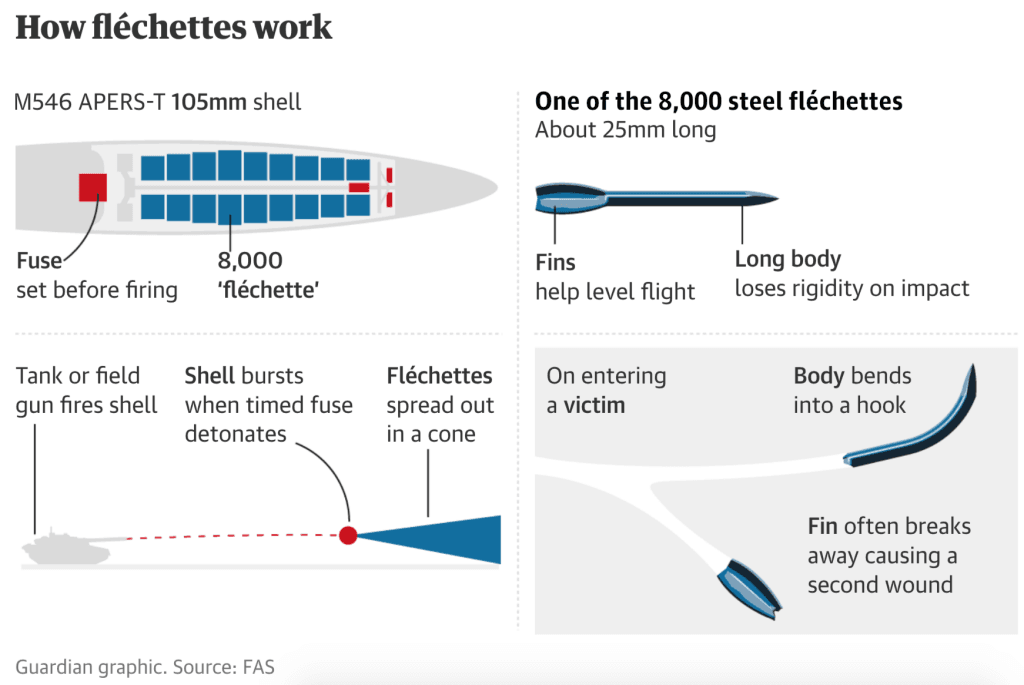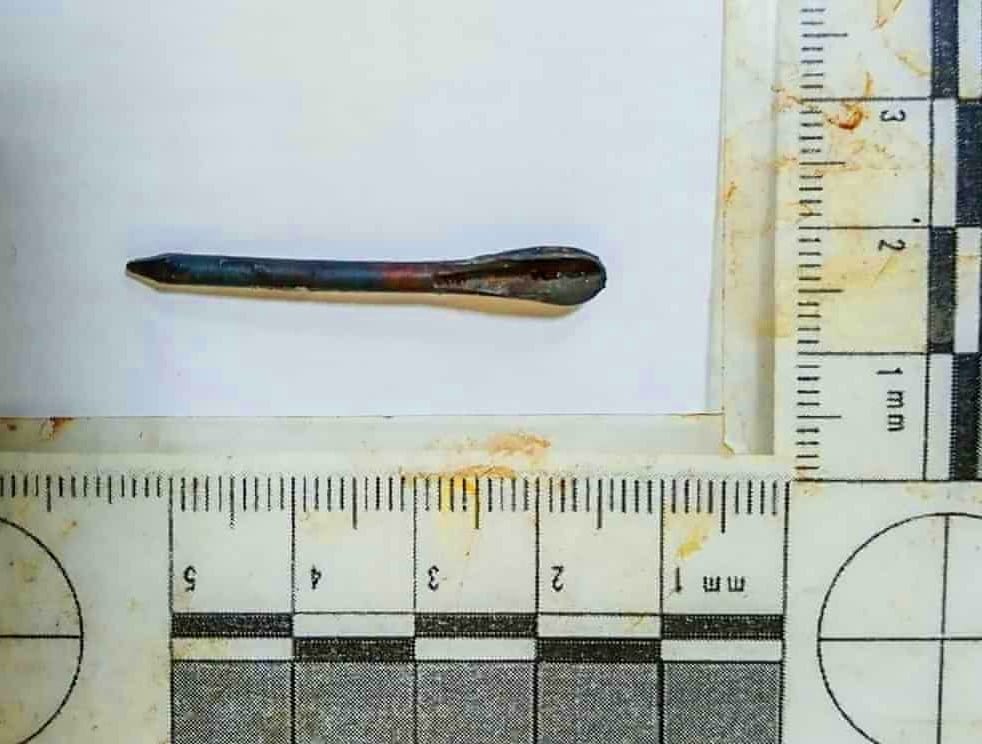On April 24, 2022, The Guardian published the results of a forensic examination of the bodies found in mass graves in Bucha. Many perceived this publication as proof of the guilt of Ukrainian troops in the deaths of civilians. We analyzed whether such conclusions can really be drawn from the article.
According to conclusion According to forensic experts, dozens of civilians in Bucha were killed by metal darts - flechettes - fired from tank or field guns. After this publication, pro-Russian Media, bloggers, users Telegram channels And social networks stated that the Ukrainian version of events has now been allegedly refuted and the non-involvement of the Russian army in the massacres in Bucha has been proven. Some considered This evidence is especially convincing due to the fact that the publication appeared in the “printed form of Russophobic propaganda” and, even despite the anti-Russian rhetoric, “the world’s leading media are beginning to carefully write the truth about the tragedy in Bucha.”

In this analysis, we do not analyze which side fired the flechette shells and who is guilty of the massacres of civilians in Bucha. Our task is to check whether the conclusions drawn from The Guardian article by pro-Russian users are correct.
“Most of the civilians in Bucha died as a result of artillery shelling and fragments of anti-personnel shells” — Readovka
In fact, the Guardian article does not say what proportion of the dead were killed by flechettes. It just says “dozens” and “several”: “Dozens of civilians who died during the Russian occupation of the Ukrainian city of Bucha were killed by tiny metal arrows from shells similar to those used by Russian artillery.” Ukrainian forensic expert Vladislav Pirovsky also said: “We found several very thin, nail-like objects in the bodies of men and women.” The forensic report mentions flechettes only in bodies from mass graves. As for the bodies found on the streets, private land plots and parks Buchi, Pirovsky speaks: “We see a lot of mutilated bodies. Many have their hands tied behind their backs and bullet holes in the back of their heads. There are also cases with machine gun bullet wounds, with six to eight holes in the back. There were also several bodies with elements of cluster bombs.” Considering that, according to preliminary data, Hundreds of civilians died in Bucha, The Guardian's publication concerns only the relatively small number of bodies found in mass graves.
“Most of those killed died from shelling” — Dmitry Sokolov-Mitrich
According to statements criminologists and officials, 90% of the dead received bullet rather than shrapnel wounds.

“The Ukrainian side has repeatedly stated that the city was shelled while Russian soldiers were there.”, — Readovka
We managed to find only one official statement Ukraine about the shelling of a column of Russian tanks and armored personnel carriers in Bucha on February 27, 2022. According to Media, the Ukrainians attacked with Turkish Bayraktar drones. According to comments military experts, shells with flechettes could have been launched by D-30 howitzers, and not by drones. Thus, even the admission of shelling the Russian convoy does not in any way indicate the involvement of the Ukrainian Armed Forces in the use of shells with flechettes.
In addition, artillery shelling usually provokes a fire in the affected objects. According to satellite fire map NASA, large fires were recorded in Bucha, coinciding in time and place with defeat Russian column: February 27 in the area of Vokzalnaya Street. From the end of February to the end of March, only two fires were registered in Bucha on the northwestern outskirts of the city: on March 16 and 20. It is unknown which side caused the fires, but in any case the two incidents do not correspond approvalthat the Ukrainian Armed Forces constantly shelled Bucha during the occupation of the city by Russian troops.
“It is this type of howitzer that uses ZSh1 shells equipped with striking elements with arrows (flechettes). This type of projectile is prohibited by conventions and is not used in the RF Armed Forces as part of standard ammunition." — Readovka
By messages eyewitnesses, Russian artillery troops who was based in the village of Andreevka, during the retreat they left behind a lot of ammunition, including unused shells ZSh1.
“With a careful approach, it turns out that it is much more likely that these fragments are from the arsenals of the Ukrainian Armed Forces.” - "Major and General»
Howitzer D-30, from which usually a 122-mm 3Sh1 projectile with flechettes is launched, is in service and Russia, And Ukraine. Therefore, it is impossible to determine by the appearance of the flechettes the troops of which country they belonged to.
“If we are talking about artillery shelling, then this excludes any version that interprets the events in Bucha as a deliberate genocide of civilian Ukrainians” — Readovka
According to the findings of pro-Russian channels, The Guardian's findings allegedly refute statements Vladimir Zelensky about the genocide in Bucha by the Russian military. According to definition According to the United Nations, genocide is the killing or infliction of serious bodily or mental harm committed with the intent to destroy, in whole or in part, a national, ethnic, racial or religious group. The definition does not say what kind of weapon the destruction should be carried out: firearms or artillery. In this analysis, we do not draw conclusions about the possible genocide of civilians in Bucha. But cases of genocide cannot be confirmed or denied solely on the basis that the victims died from shelling. In addition, as we wrote earlier, hundreds of residents of Bucha steel victims of deliberate shooting to kill, and not accidental hits from shells.
The conclusions about the non-involvement of the Russian army in the killings in Bucha, allegedly following from the publication of The Guardian, contradict the original text of the article. On the contrary, starting from the headline itself, the publication claims that dozens of civilians in Bucha were killed by metal darts from Russian artillery. According to a number of witnesses, The Guardian writes, Russian artillery fired such shells several days before leaving Bucha at the end of March. All other arguments in favor of Russian troops, allegedly published by the “leading world media,” are just propaganda speculation.
Image: The Guardian
Not true
Read on the topic:
- The Guardian: Dozens of Bucha civilians were killed by metal darts from Russian artillery
- Meduza: In the bodies of those killed in Bucha and Irpen, flechettes were found - small metal darts that were used during the First World War
- Is it true that a video of Ukrainian soldiers laying out corpses in Bucha has leaked online?
- Is it true that the video from Buchi shows one deceased moving his arm while the other sits down?
If you find a spelling or grammatical error, please let us know by highlighting the error text and clicking Ctrl+Enter.






